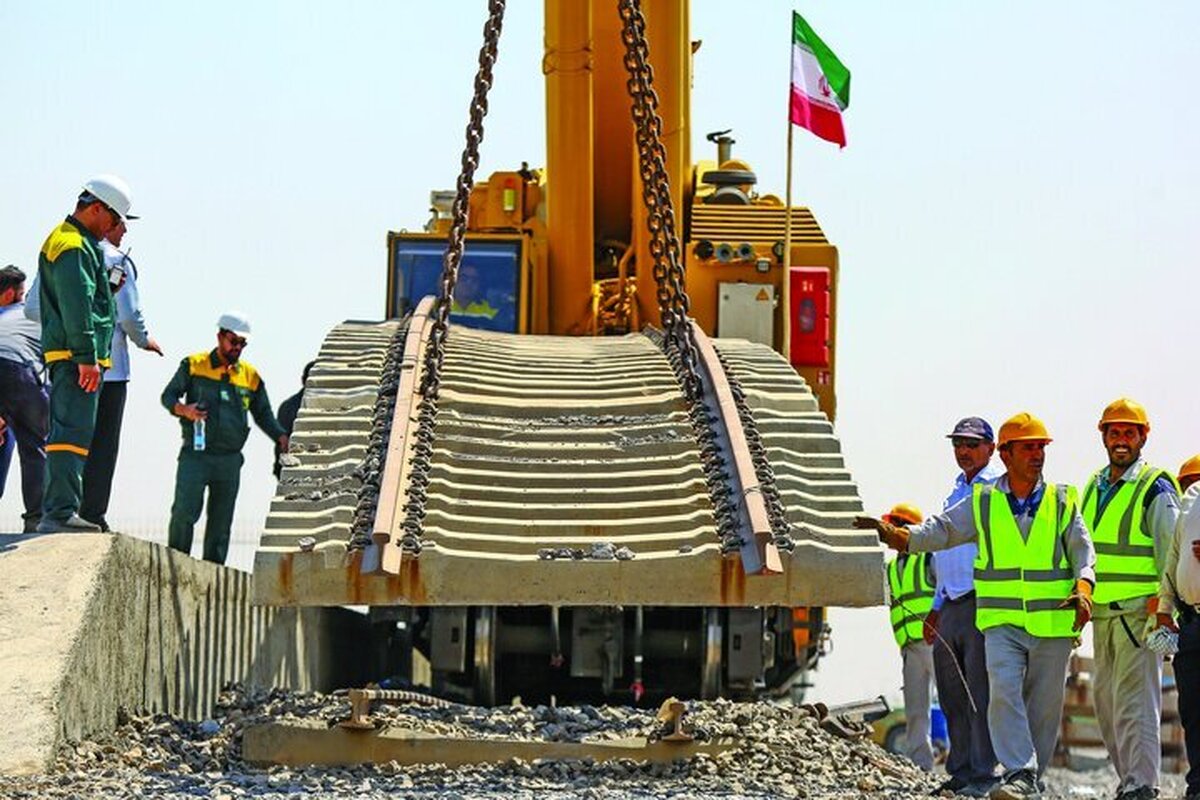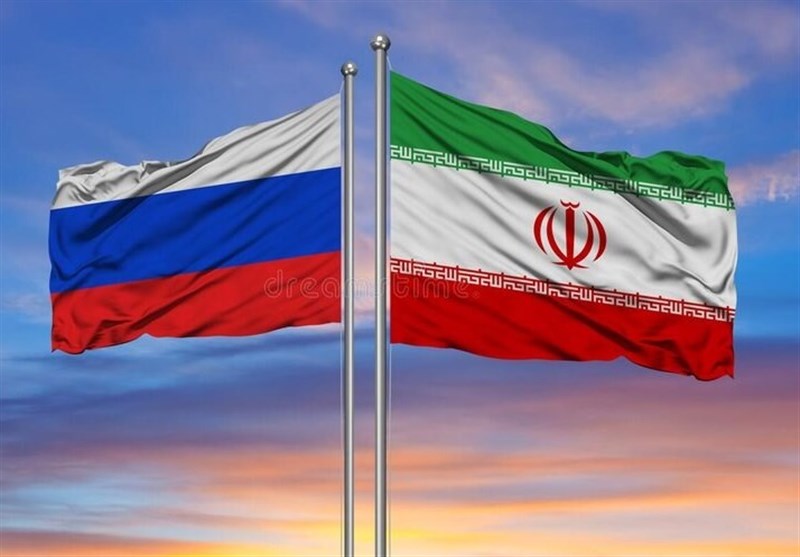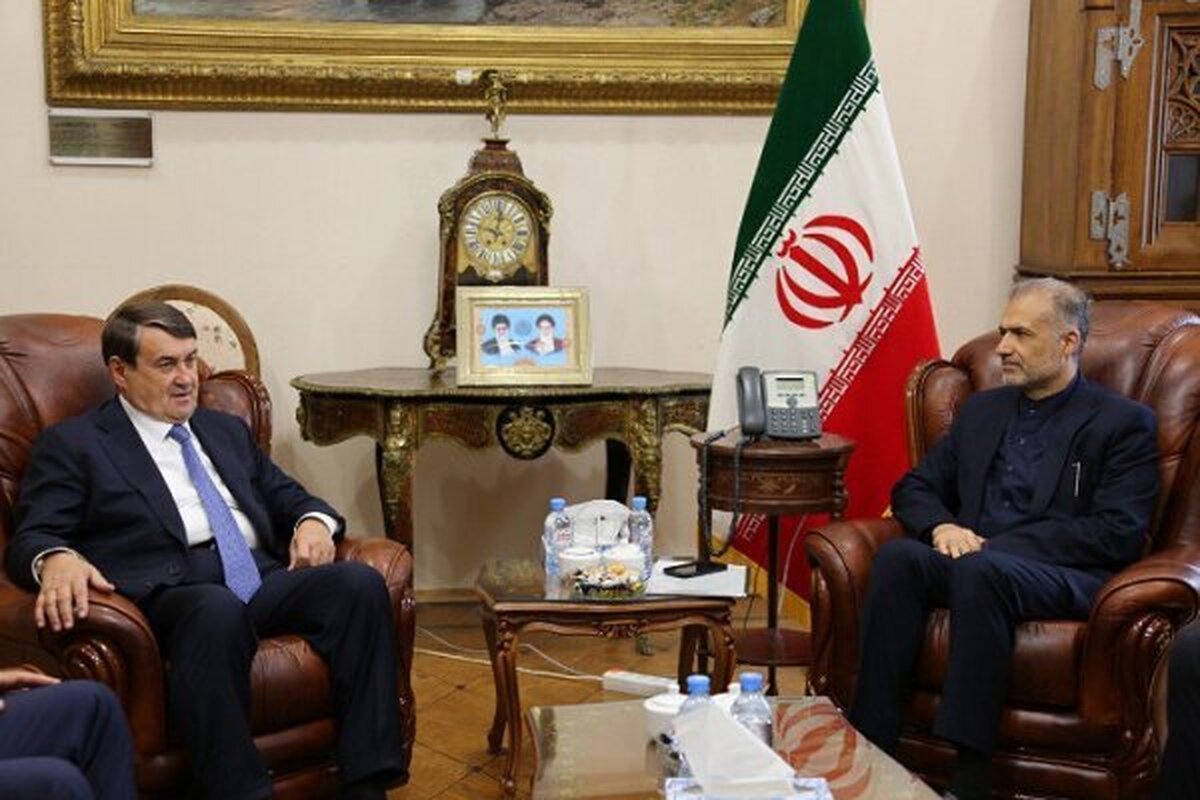
Deal With Russia on Completing Rasht-Astara Railroad Likely

EghtesadOnline: Russia and Iran in May could sign an agreement on completing the construction of the Rasht-Astara rail section in Iran, Russian Deputy Prime Minister Alexander Novak told reporters on the sidelines of the Caucasus Region Investment Exhibition.
Russia and Iran in May could sign an agreement on completing the construction of the Rasht-Astara rail section in Iran, Russian Deputy Prime Minister Alexander Novak told reporters on the sidelines of the Caucasus Region Investment Exhibition.
"We have just discussed this with the Iranian ambassador [to Russia, Kazem Jalali] and I had a meeting on the signing of a bilateral agreement between our countries on completing the Rasht-Astara rail section. I hope that we will do this in May, since we have agreed on everything in practice, and the coordination procedures are currently underway. That is, this is a very important step; we have been moving toward this for a long time; it is actually to connect the infrastructure of Russia and Iran," Novak was quoted as saying by Interfax on May 3.
The Iranian ambassador earlier on Wednesday said Tehran expected in the near future to sign an agreement with Russia on completing the Rasht-Astara rail section and to begin construction.
"I must convey to the distinguished participants in today's discussion the good news that an agreement will be signed in the very near future on constructing the Rasht-Astara rail section with the assistance of the Russian Federation, and the project will be transferred to an operational, practical level. I think that within three to four months, maximum until October, the executive part of implementing the project of the International North-South Transportation Corridor will begin," Jalali said at the investment exhibition.
In March, Sergey Pavlov, the first deputy head of Russian Railways, also told reporters that Russian Railways was expecting the signing of intergovernmental agreements on the completion of the Rasht-Astara railroad this year. The Russian Ministry of Transport is preparing two intergovernmental agreements: Iran-Russia and trilateral Azerbaijan-Russia-Iran.
Asked about its construction cost, Pavlov said "the approximate calculation now being considered is $1.6 billion." There are plans to build both narrow and wide-gauge tracks in this section.
"There were negotiations, including at the highest level, and a decision was made to build a section of the Rasht-Astara line on a combined gauge. That is, they plan to lay both 1435 mm rails, the current standard in Iran, and 1520 mm rails, the Russian gauge. But first, 1435 mm rails will be laid in order to use the existing infrastructure and move as quickly as possible," he said.
Financing Hurdle
The project has faced years of problems in terms of construction and implementation. The main obstacle has been financing, particularly due to the United States’ sanctions on Iran.
According to an earlier agreement between Iran and the Republic of Azerbaijan, both sides pledged to provide $500 million each to build the Rasht–Astara railroad. And in 2016, the International Bank of Azerbaijan signed a deal with Iran on the allocation of a $500 million loan for this purpose. However, in practice, this agreement and the loan were never implemented due to the comprehensive US sanctions on Iran’s banking network.
Connecting Southeast Asia to Eastern Europe, Russia
Rasht-Astara railroad is a key project connecting southeast Asia to eastern Europe and Russia, according to Kheirollah Khademi, the CEO of the Construction and Development of Transportation Infrastructures Company.
“Its completion can bring in enormous revenues by increasing the volume of goods transited through Iran. The route can attract the lion’s share of the cargo transported between Russia and India, or East Europe and India,” he said.
The Astara–Rasht–Qazvin railroad, which will wind along the southwestern corner of the Caspian Sea, forms a central link of the longer INSTC, a multimodal route linking India, Iran, Azerbaijan, Russia and Europe.
The cross-border Astara (Iran)–Astara (Azerbaijan) section of the railroad was officially inaugurated on March 29, 2018, while the Rasht–Qazvin section inside Iran was implemented on March 6, 2019. Therefore, the only remaining gap is a 164-kilometer railroad section from Rasht to Astara.
Until this railroad segment is completed, freight moving by train must be transferred to trucks and then back again.
Khademi referred to the passage of Rasht-Astara railroad through farms along 50% of the route as a significant hurdle in the project’s completion.
“We need to purchase these farms and after that, construct bridges to preserve the nature. So far, we have designed bridges along 52 kilometers of the way.”
Comparative Advantage
The Iranian government is determined to implement this important rail project, which compares favorably along various metrics with a handful of other railroad projects in the region, Vali Kaleji, an expert on Central Asia and Caucasian studies, wrote for the Jamestown Foundations.
Notably, the Iranian-Armenian railroad from Meghri, Syunik Province, in southern Armenia, suffers from high costs and has not made any progress since 2009. Whereas plans to restore Soviet-era east-west rail corridors in the South Caucasus following the Second Karabakh War (Sept. 27–Nov. 10, 2020) have stalled due to differences between Armenia and Azerbaijan over the interpretation of the ninth clause of their ceasefire agreement, brokered by Moscow.
The construction and completion of the Rasht–Astara railroad is, therefore, the only practical and accessible short-term prospect for Iran to connect to the South Caucasus. Its implementation will complete the last remaining section of INSTC and create a physical rail link for the Republic of Azerbaijan, Georgia and Russia to Iran’s Chabahar Port on the Oman Sea and Bandar Abbas on the Persian Gulf.
Another important issue for Iran is expanding its freight corridors to the Moscow-led Eurasian Economic Union in order to take fuller advantage of the EEU-Iran Preferential Trade Agreement. In this regard, Iranian President Ebrahim Raisi last year said, during a tour of Gilan Province (where the two cities of Rasht and Astara are located), that railroad and other transit infrastructure projects, along with the purchase of roll-on/lift-off vessels, should be accelerated to boost intra-regional trade.
Iran desperately needs to complete the Rasht–Astara railroad. But since the Republic of Azerbaijan has been unable to fulfill its financial obligations due to sanctions, Tehran turned to Moscow for support.



